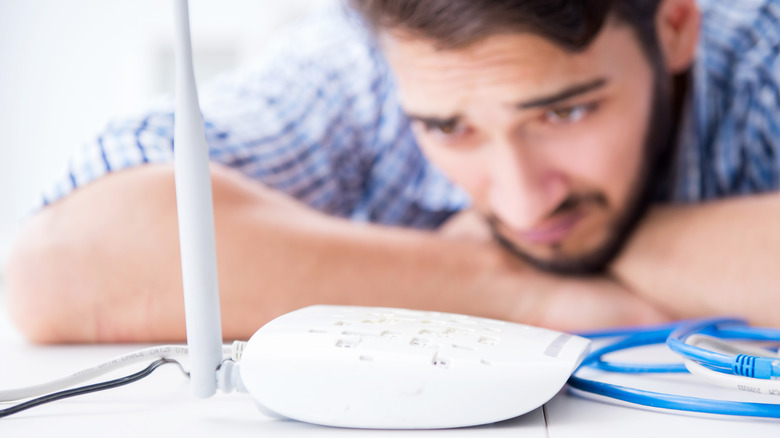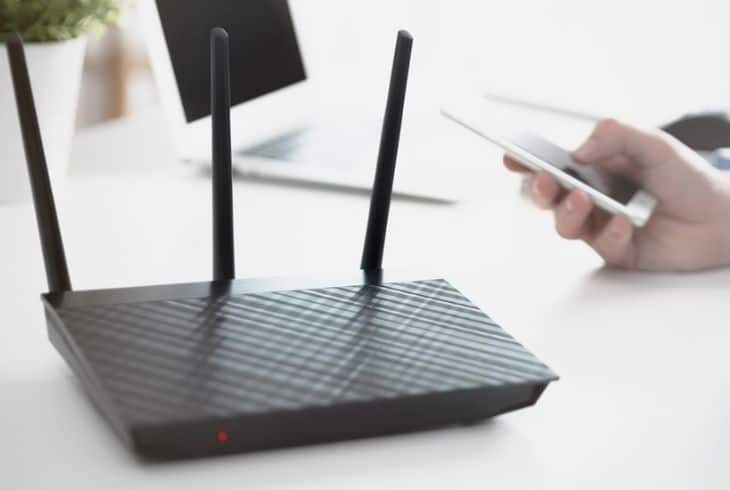The Internet has become an indispensable part of our daily lives, and we rely on it for everything from work to entertainment.
However, power outages can disrupt the internet connection, and you know how frustrating it can be to have your internet connection suddenly cut off.
Even after the power is restored, your Internet connection may not automatically restore. Fortunately, there are several steps you can take to reset your internet after a power outage.
If your router stops working after a power outage, you should reset it. Start by unplugging the router and wait 30 seconds. Connect the power cable and restart the router. Allow the router up to 10 minutes to reconnect everything. Your internet connection should be back up.
How to Reset Internet after Power Outage
Power reset
A power reset helps reboot the router to get rid of any cache files that were stuck in its memory. Follow these steps to do a power reset:
- Unplug the router
- Wait about 30 seconds
- After some minutes (5 to 10 minutes), plug the router back in and allow it some time to properly reboot. The lights on the router will blink a few times before they become stable.
- Check your internet connection by loading a web page to see if the internet is restored.
- If the connection fails, try the next reset method.
Hard reset
If the power reset did not restore the internet, you should try a hard reset. Note that a hard reset is the same as a factory reset, and it removes all your file configurations from the device, including your SSID and passwords. You will need to set up the router afresh.
Follow these steps:
- Find the reset button (most routers have a reset button on the back or side). In some devices, you will need to insert a clip into the reset hole. Check your router manual if you cannot find the reset button.
- Press and hold the reset button for 30 seconds, or once the lights on the router start to flicker.
- Reactivate the router. You may need to input your account information to configure the router. Check the router manual for this information, or call your ISP.
- Once you have set up the router, confirm that the internet connection is restored.
Reset the modem (if the router appears to be working but no internet)
If you can connect to your home network but there is no internet, it could be an issue with your modem or ISP.
Follow these steps to troubleshoot the problem:
- Check router lights. If the LAN indicators are blinking or solid green, but the internet indicator is showing orange or amber, it means the router is broadcasting its own internet, but not from the ISP.
- Check the modem lights. If the modem lights are blinking red or out, it means the modem is the problem.
- Unplug the router from the modem, and connect your device (computer, tablet, or phone) to the modem.
- If your laptop connects to the internet, it shows that the modem is working properly. However, if your laptop cannot connect to the internet, then your modem could be the problem.
- Once you confirm that the modem is the cause of the internet failure, perform a power reset. Unplug it, wait for 30 seconds, plugin it in, and reconnect.
Reboot your DNS server
A power outage can cause the ISP’s DNS servers to stop working, which can result in internet connection failure. You can resolve this by rebooting the DNS servers.
Follow these steps to reboot your DNS:
- Navigate to the search bar and search “Command prompt”.
- Open the command prompt application. A new black window will open.
- Type “net stop dnscache” and press enter. Allow it a few minutes to stop the DNS service.
- Type “net stop dnscache” and press enter. This will restart the DNS servers.
- Open your browser and search to see if the internet connection has been restored.
Call your ISP
If nothing works after trying the above methods, it could be a problem with your ISP. Call your ISP to report that your internet is not working after a power outage.
If there was no damage to the ISP’s infrastructure, the ISP will help you restore the internet. You might be asked to perform troubleshooting tasks on the router while you are on the phone with their reps.
If the ISP’s infrastructure was damaged in a storm, strong winds, or floods, you might have to wait until repairs are done. This might mean staying without the internet for a couple of hours or days. However, find alternative ways of getting an internet connection such as using your android phone or iPhone hotspot.
Can a power outage damage a router?
While a power outage may not damage your router outright, a voltage spike may precede or immediately follow the power outage, and it can cause damage to your router and other electrical devices.
If there is a spike in the voltage, it will be sent in frequency through the communication line, which could lead to your router or modem. If the spike is high enough and the router does not have a surge protector, it can blow up the hardware inside your router.

When this happens, the router is said to have been “fried”, and you can smell a burnt plastic odor coming from your router. The sudden spike could damage all your electrical devices that have been powered on, not just your router.
If your router is connected to a surge protector or has an in-built surge protector, it can guard the router against the voltage spike. Surge protectors work by absorbing the surge and neutralizing it before it reaches the router. By containing the spike, the surge protector helps keep your router intact.
See also: Why does my router keep shutting down
How to Protect your Router from Power Outages
If you live in an area that experiences frequent power outages, you should protect your router, laptops, and other electrical devices from power surges.
One device you can use is a surge protector to deal with voltage spikes when the router is plugged in. A surge protector guards your devices against physical harm due to spikes, it is enough in most situations.
You can also buy an uninterruptible power supply to give you immediate backup power to ensure your router is always on. It can save you from slit-second power losses or extended power outages.
What Causes Slow Internet after Power Outage
There are several possible causes of slow or limited internet after a power outage. Here are common causes:
Network congestion
When power is restored after an outage, many devices may try to reconnect to the network simultaneously, leading to network congestion and slow speeds. To resolve this issue, you can try disconnecting some of the devices or wait for a few minutes to allow the network to stabilize.
Router configuration issues
Power outages can disrupt router settings and cause connectivity problems. You can resolve this by resetting your router to its default settings or checking and reconfiguring the settings manually. If your router won’t reset, you can try the 30-30-30 reset.
Damaged network equipment
Power surges caused by power outages can damage network equipment, which can result in connectivity problems and slow speeds. To fix this, you may need to replace the damaged equipment, such as the router, modem, or switches.
ISP issues
Power outages can also cause issues with your internet service provider, leading to connectivity problems and slow speeds. You can contact your ISP to report the issue and check for any network problems or outages in your area.
In addition, other factors that can cause slow internet after a power outage include damaged wiring or cables, interference from nearby electronic devices, or outdated hardware.
How to Fix Slow Internet after Power Outage
If you are experiencing a slow and flaky internet after a power outage, there are several fixes you can try. Follow these steps to fix your slow internet:
- Restart your router and modem.
- Check the router settings and ensure they are properly configured.
- Disconnect devices that are not in use to free up bandwidth.
- Contact your internet service provider to check for any network issues or outages in your area.
- Upgrade your internet plan or router if the issue persists.

TV Won’t Connect to Internet after Power Outage- How to Fix
If your TV is not connecting to the internet after a power outage, follow these steps to fix:
- Unplug the TV and the router for 30 seconds, then plug them back in.
- Check if other devices are connected to the Wi-Fi network.
- Verify that the Wi-Fi password is correct.
- Try connecting the TV to the router using an Ethernet cable.
- Check if there are any software updates for your TV that may resolve the issue.
If none of these steps work, contact your internet service provider or the TV manufacturer for further assistance if none of the above steps work.

